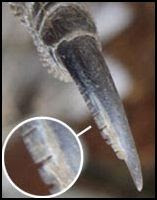Feathers are essential. Without a working set of feathers, a bird can't fly.
It cant find food, escape enemies, or stay warm and dry. Preening keeps feathers in good condition. No wonder owls, like all birds, spend hours each day preening.
Two main activities are involved in preening: a simple stroking motion of the beak, to smooth the feather surface, and a nibbling action, where the bird moves its beak along the length of each feather from base to tip.
Preening is good for feathers in several ways-it puts disarranged feathers back in the proper place and configurations. Feathers are made up of thousands of smaller strands that hook together with tiny barbs. If strands get unhooked during the day’s activities preening zips them back together. Owls that are preening often shake and stretch their wings, which also helps arrange their feathers.
Owls may preen with their talons as well as their beaks. In fact, the barn owl has a special comblike talon that is used just for preening. Because and owl can't preen its own head with its beak, it uses its talons to groom this area, or it may solicit help from another owl.
Mutual preening is a very common owl activity. The behavior seems to make owls less aggressive toward one another. Courting owls strengthen their pair-bond by preening each other. Parents and their chicks also engage in mutual preening.


